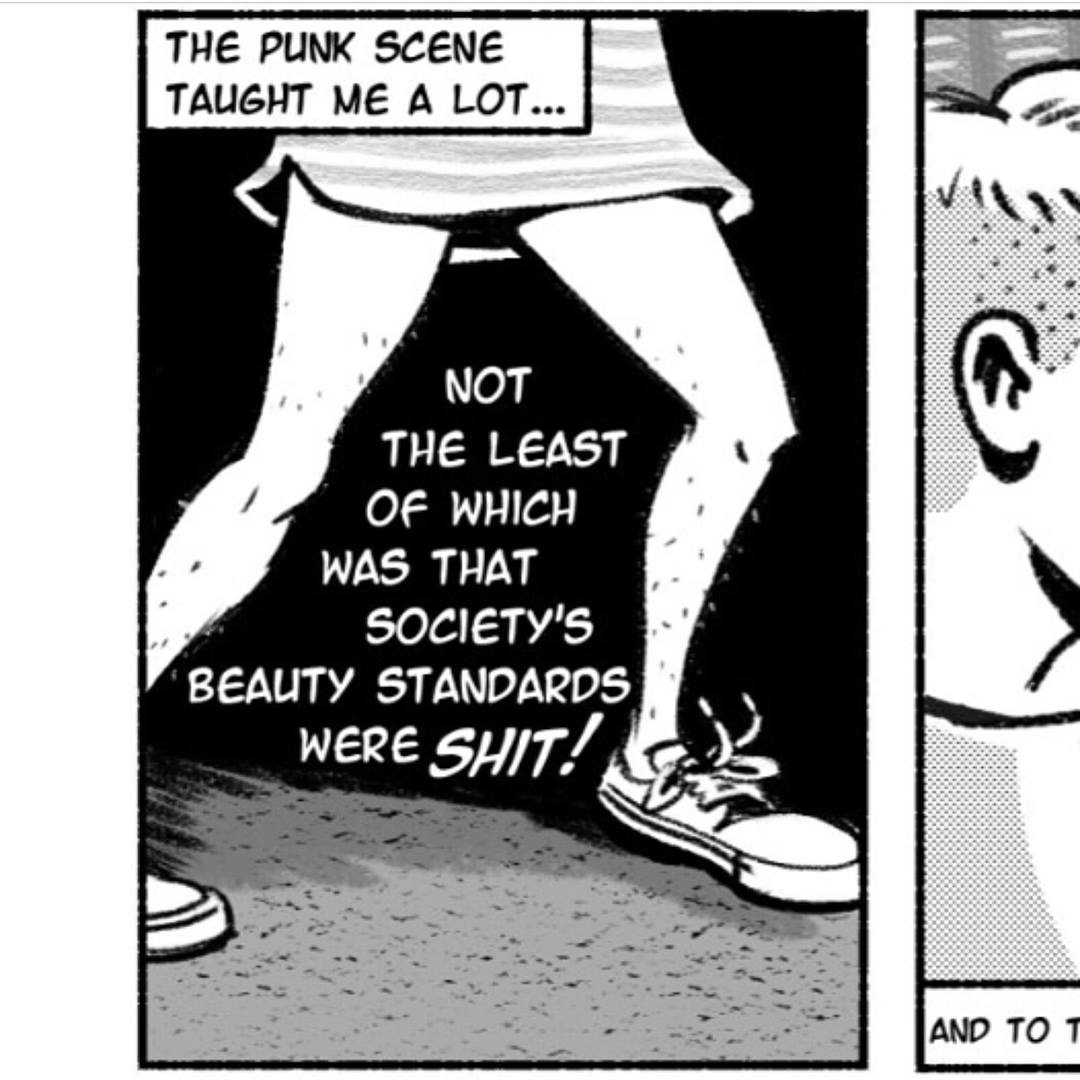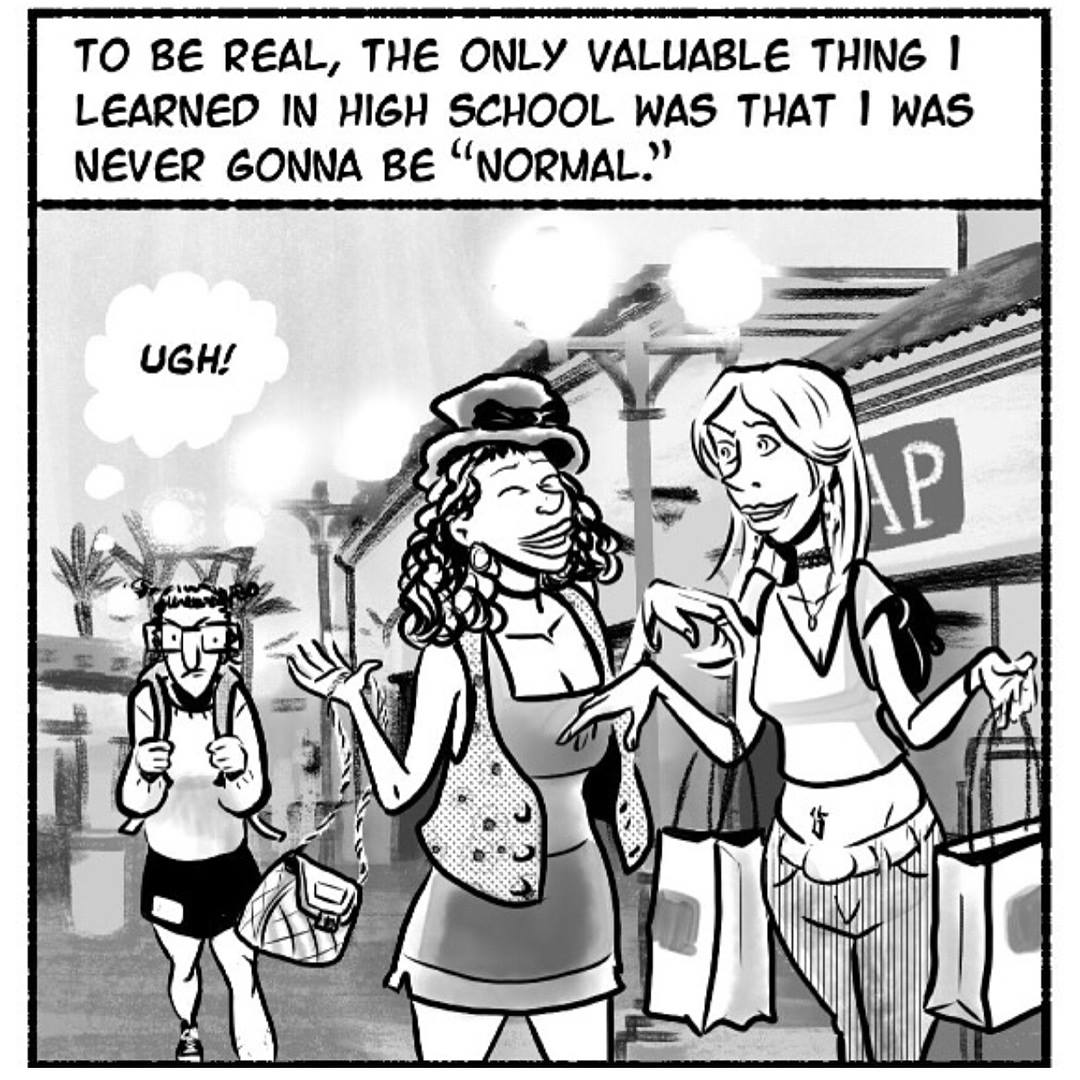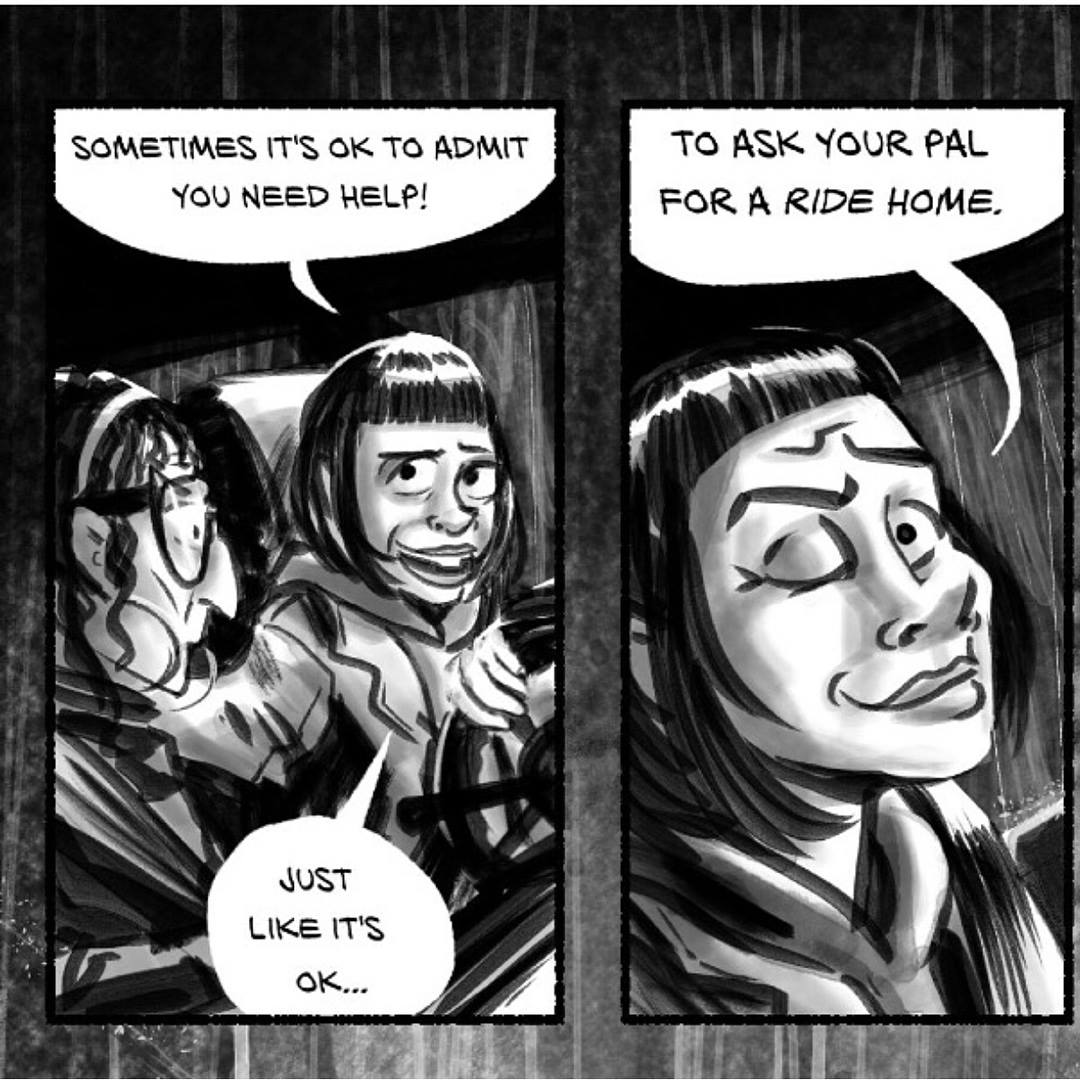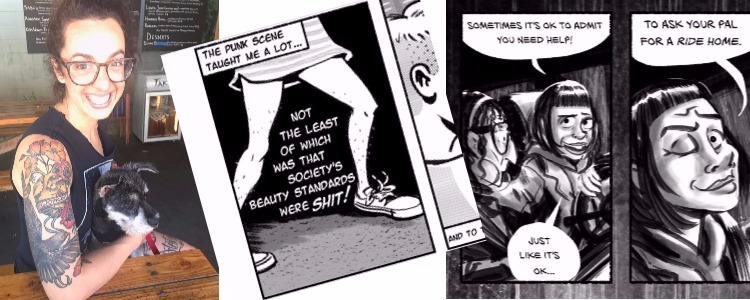Graphic Novel “Ink in Water” Portrays Eating Disorder Recovery Through a Punk-Feminist Lens
Lacy Davis is a writer, podcaster, lifting coach, and gym owner. An unabashed feminist and tattoo enthusiast, Davis wrote Ink in Water: An Illustrated Memoir (Or, How I Kicked Anorexia’s Ass and Embraced Body Positivity) to show that being punk doesn’t make you immune to eating disorders.
We chatted with Davis about her new book, the twists and turns of recovery, and the types of eating disorder stories she’d like to see in the future. Check out our interview below!
Content Warning: if you are struggling with an eating disorder, please know that the content and images of this graphic novel can be triggering. If you are in recovery, check with your doctor before reading this book. For recovery resources and treatment options, please visit our help and support page. If you or someone you know is struggling with an eating disorder, call ANAD’s Helpline at: (888) 375-7767 or the National Alliance of Eating Disorders Helpline at: (866) 662-1235.
If you are thinking about suicide, call or text the National Suicide Prevention Lifeline at 988. In crisis situations, text “NEDA” to 741741 to be connected with a trained volunteer from the Crisis Text Line.
What initially motivated you to write Ink in Water?
I’ve wanted to write a book since I was a kid and I have been blogging about my recovery basically since it started. For me, having a public platform of positive accountability was super helpful for keeping me from my ED behaviors. I’ve had about five years since my last bulimic episode and just now do I feel comfortable speaking with any sort of authority on the subject of my recovery.
Eating disorders are super sneaky and I really felt like I needed a solid half decade under my belt to feel confident that I wasn’t about to relapse. I basically chose to publish the book when I felt I was well enough to handle writing the book without getting triggered and hearing feedback (including other people’s sometimes graphic stories) without falling back into old habits.
How did you decide upon the look and feel of the book?
The book is a graphic novel, and my partner [Jim Kettner] actually did the illustrations. We both went to art school and felt it was extremely important for the book to tell a story, be beautiful, and have a concept. We used the ink in water representation to talk about both getting in and out of an eating disorder. My ED started as a drop of ink in the cup of water that was my brain (I thought I should maybe go on a diet to “get really healthy”) and it spread and spread until it took over completely. We used the idea of water washing the ink away to talk about recovery and I think that translates really well visually. Our publisher dictated the size, color, etc.

What was it like to write a book in regards to your own recovery?
Hard! So hard. I never felt in danger of relapse but I did feel so sad for the young version of myself. Eating disorders are just so self-hating and I wished I could go back and approach myself with more care, compassion, and love. There is also a pivotal character in the story who has passed away and writing that character was rough. I loved my friend so much and giving them proper representation was emotional and heavy.
What’s the most important thing you’ve learned on your own recovery journey?
It’s never over! I treat myself really carefully (i.e. I never partake in diet talk or berating my body.) I delete all weight loss content from my social media accounts, which often means unfollowing folks I genuinely like. The most important tool I have in my recovery is to acknowledge that diet culture permeates, that I am susceptible to it, and that the compassionate thing to do for myself is to get it away from me and call it out when I see it.

How is Ink in Water different from the typical recovery stories we’re used to seeing?
There are MANY stories that trigger the crap out of me. I was careful to not use numbers when telling my tale. I also started engaging in ED behaviors in my 20s, as an already feminist-identified punk rocker. That story is different from most that I see.
What would you like to see in terms of diversity from other eating disorder stories that are produced?
I’d love to hear more from folks who aren’t cisgender, straight, white women! I am a cis white woman myself (though I am queer) but I am the first to recognize that these sort of dominant narratives don’t do much to foster dialogue in POC communities. I also think that eating disorders for trans folks are particularly common and that the recoveries will be unique. I’d like to hear more about that.
Also, tactically, I’d like more BED and orthorexia memoirs! There is a lot out there about anorexia, bulimia, and compulsive exercise but there are so many ways people get screwy with food. The more kinds of more representation we have, the more recoveries we invite. This means publishers should put some cold hard cash toward marginalized folks telling their stories! Representation is truly everything.

What advice would you give to a reader (or anyone else) struggling with similar issues that you did?
Have patience. Work to accept your body shifting, because it’s going to change in recovery, so you can’t cling. Surround yourself with people who have positive relationships with their bodies and try to soak that up. Read/write/be creative. Acknowledge that eating disorders dominate all your time and make you boring. Find something much more exciting than ED behavior and funnel your energy into it. ALSO—eating clean, dieting, lifestyle changes, cleanses, etc.—don’t fucking do them. They’re traps!
What has been the best part about writing and publishing Ink in Water?
Hands down the best part about telling my story is people telling me that I helped them want to be better to themselves and their bodies. Makes me cry every time.




